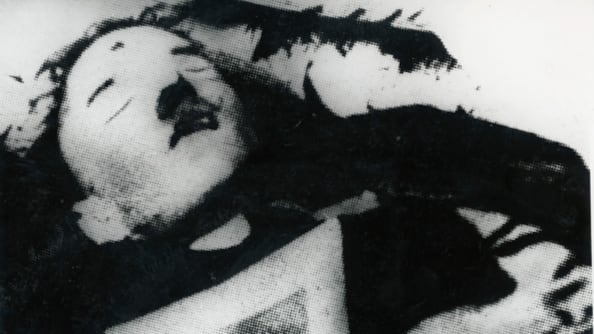
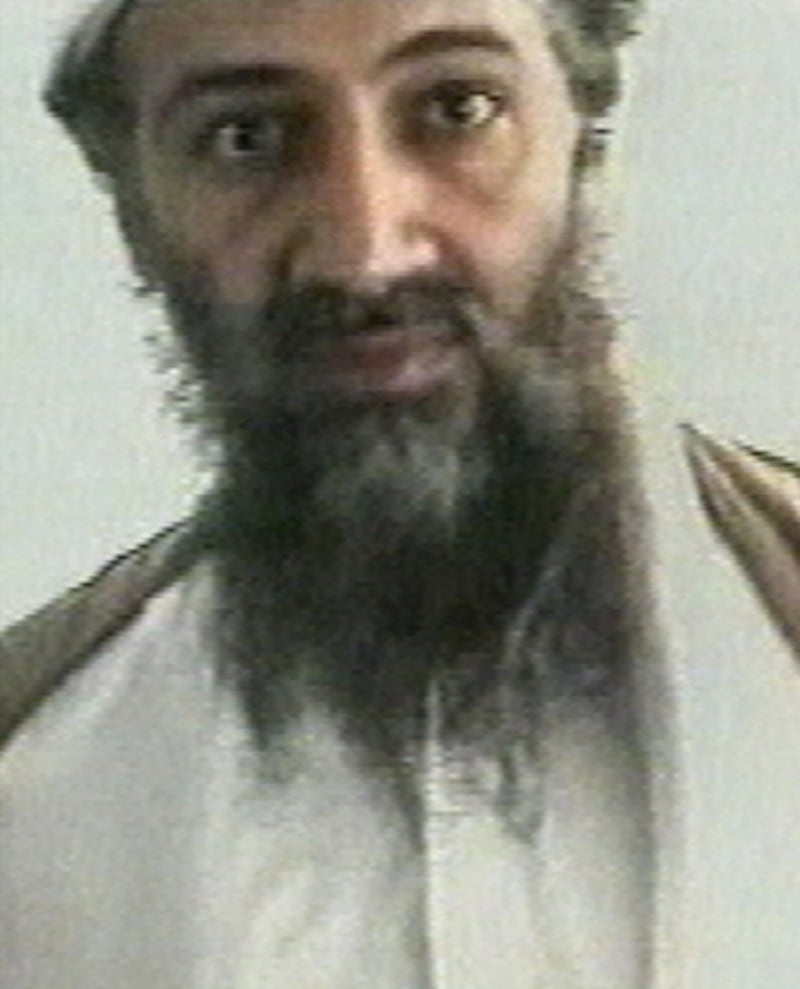
Since the White House announced the U.S. killed Osama bin Laden May 1, there has been furious debate about whether or not to release photos of his corpse. On one hand, the photos would put to rest any theories that the terrorist leader is still alive. But officials are wary that the graphic images—which reportedly show brains and blood spilling out of a gaping hole above his left eye--would enrage bin Laden’s followers and potentially enhance his martyrdom status in the Middle East. One U.S. official has argued that the image in which bin Laden is most recognizable is so gruesome that even the media might have a hard time broadcasting the photo, let alone stomaching it.
AP Photo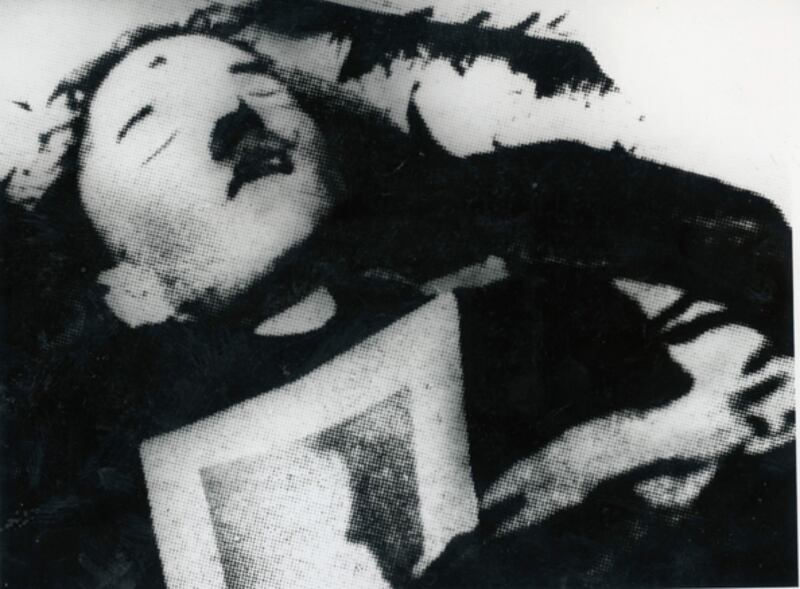
In April 1945, as the Axis Powers started to lose ground to the Allied Forces, Hitler holed himself up in the Führerbunker ("Führer's shelter") below the Reichskanzlei (Reich Chancellery). On April 29, Hitler married his lover Eva Braun in a small ceremony, and then proceeded to deliver his last will and testament. Then, on April 30, when Hitler was informed that Soviet troops were within just two blocks of the Reich Chancellery, the couple committed suicide; Braun by biting into a cyanide capsule, and Hitler by shooting himself with his Walther PPK pistol. The corpses of Hitler and Braun were allegedly doused with petrol and set ablaze as the Soviets approached. However, in December 1964, 19 years after the end of World War II, this picture reputed to show Hitler’s corpse surfaced. It was claimed to have been taken by a member of Hitler’s staff before his body was incinerated.
Bentley Archive, Popperfoto / Getty Images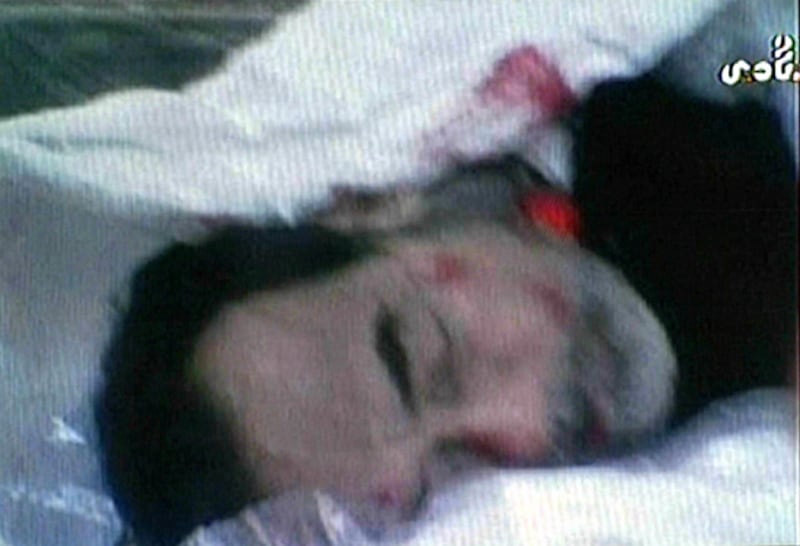
After Saddam Hussein was captured in a hole in the ground in Iraq, tried in court, and then executed by hanging on an early morning in 2006, the former dictator’s body was “ reported to have been flown by helicopter to an unknown location,” the BBC said. But within 24 hours he was buried in the town of Ouja, his birthplace, in “a religious compound” just a couple miles from where his sons are buried, msnbc.com reported. After the ceremony, “Gunmen took to the streets, carrying pictures of Saddam, shooting into the air and calling for vengeance.” In 2007, The New York Times noted that the burial site did not attract many visitors.
Getty Images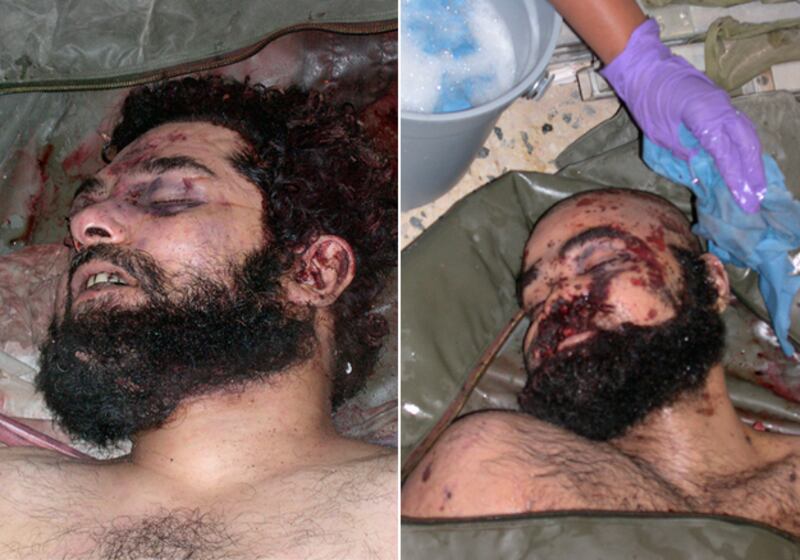
Uday Hussein was the eldest son of Iraqi dictator Saddam, and Qusay, his younger brother. Originally, Uday was the heir apparent to his father, but lost his place in line due to his troubled relationship with his father and brother. Qusay replaced him as heir in 2000. Both brothers have been accused of killing numerous political dissidents, and Uday was also accused of kidnapping Iraqi women and raping them, as well as torturing Iraqi Olympic athletes who did not perform to his expectations. On July 22, 2003, troops in the American 65th Military Police, joined by U.S. Special Forces—around 200 total—engaged in an intense firefight during a raid on a home in the northern Iraqi city of Mosul. After four hours of gunfire, troops entered the house and found four dead bodies: Uday, Qusay, his 14-year-old son Mustapha, and their bodyguard. The Pentagon released gruesome pictures of the brothers’ dead bodies because, according to then Secretary of Defense Donald Rumsfeld, “This is an unusual situation…. These two individuals were particularly vicious individuals. ... They are now dead. ... The Iraqi people have been waiting for confirmation of that and they in my view deserve having confirmation of that.”
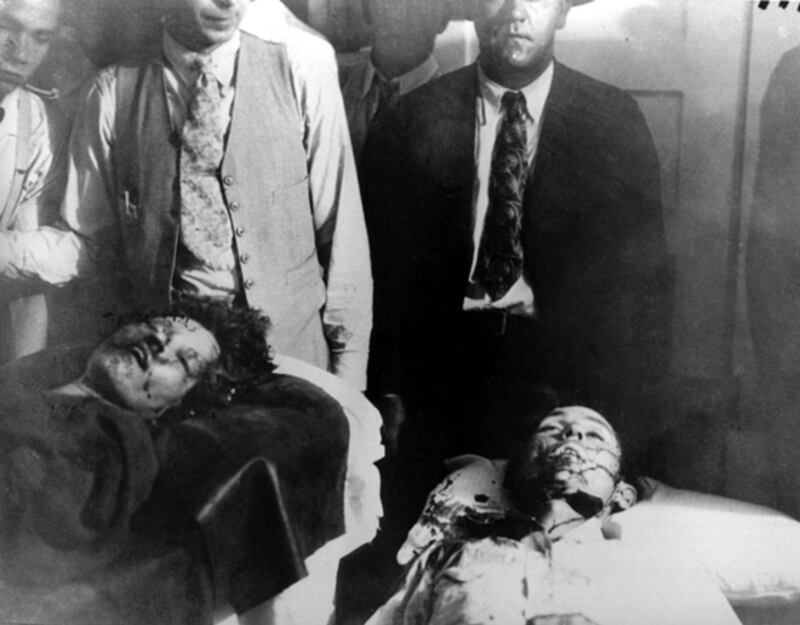
Bonnie Parker and Clyde Barrow were a pair of criminals (and lovers) who traveled across the United States robbing banks and killing at least nine police officers during the Great Depression. The couple was romanticized in the press, and their story was adapted into a groundbreaking 1967 film starring Warren Beatty and Faye Dunaway as the star-crossed lovers. However, after the duo allegedly partook in the Grapevine Killings—killing two young highway patrolmen in Grapevine, Texas—public perception shifted, with many demanding their heads. People started putting up cash rewards for the bodies of Bonnie and Clyde, and The Dallas Journal ran a cartoon showing an empty electric chair with a sign saying: “Reserved”—for Clyde and Bonnie. The outlaws were finally ambushed and killed on May 23, 1934, on a rural road in Bienville Parish, Louisiana. Six police officers unloaded automatic rifles, then shotguns, then pistols into the car. According to the coroner’s report, Clyde had 17 separate entrance wounds, and Bonnie had 26—included several shots to the face.
AP Photo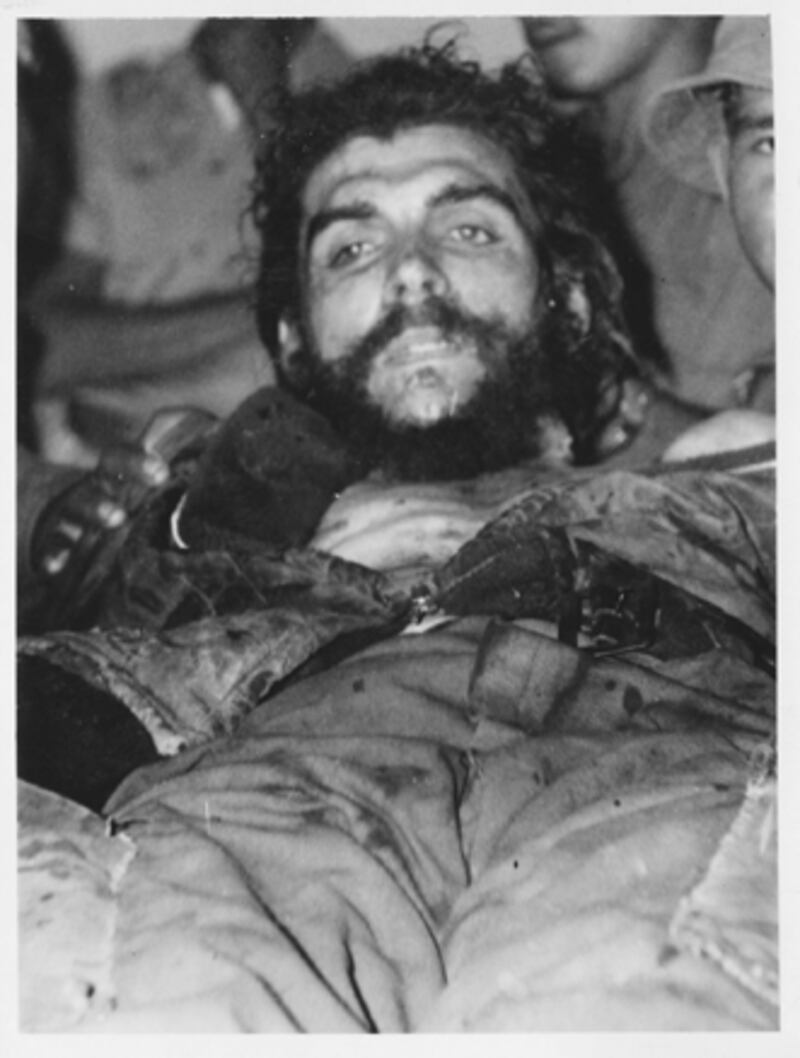
Che Guevara’s body is currently in Cuba—but that wasn’t always the case. After he was executed in 1967, his body (minus his hands, which had been chopped off) was dumped in a pit in an airstrip in Bolivia, as this thoughtful post from John Lee Anderson on the New Yorker’s website describes it. His current resting place remains a popular destination for visitors—and is a step up for the former revolutionary from that hole in Bolivia.
Diego Giudice, KRT / Getty Images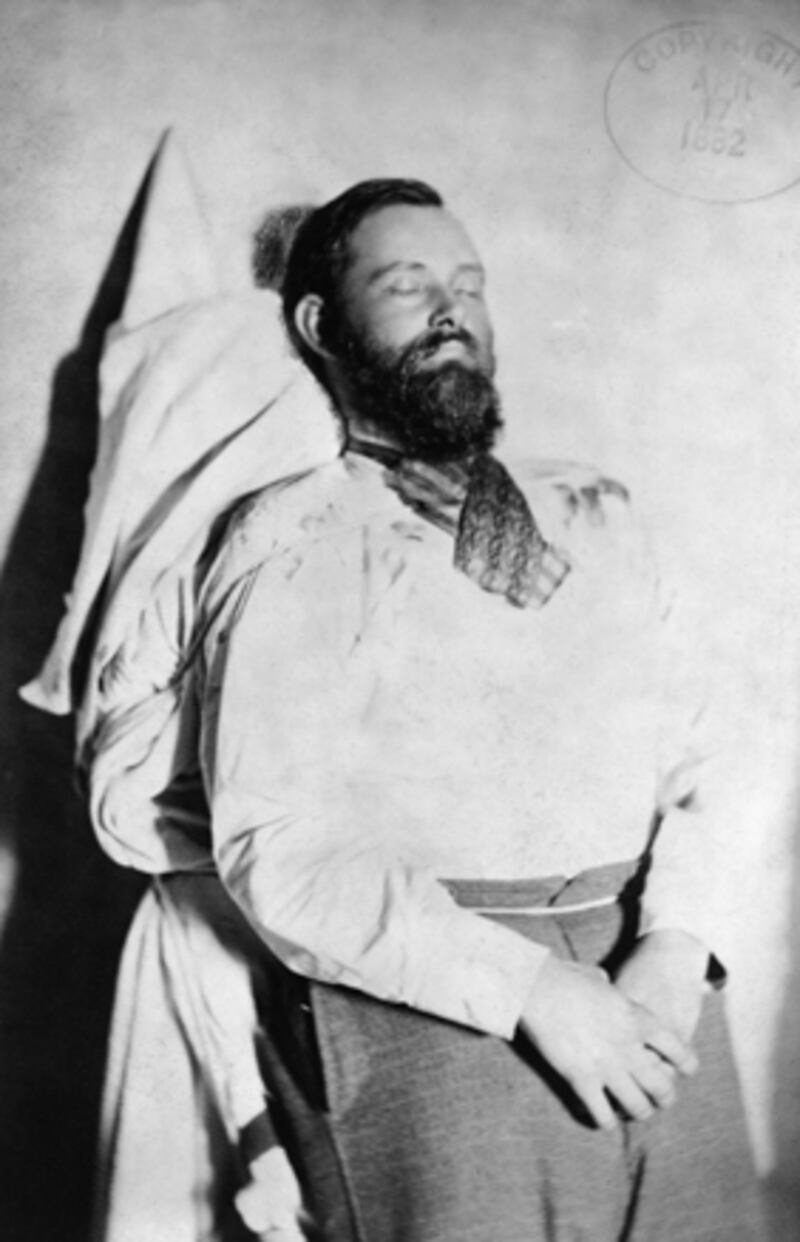
Shot in 1882 by Bob Ford, the notorious outlaw Jesse James was buried in Kearney, Missouri. Any doubts about if the body was really his or not were laid to rest in 1995, when the body was dug up and the DNA analyzed. As the author of a biography of him noted, had James lived in more modern times, ''he would have been called a terrorist.''
R. Uhlman / Corbis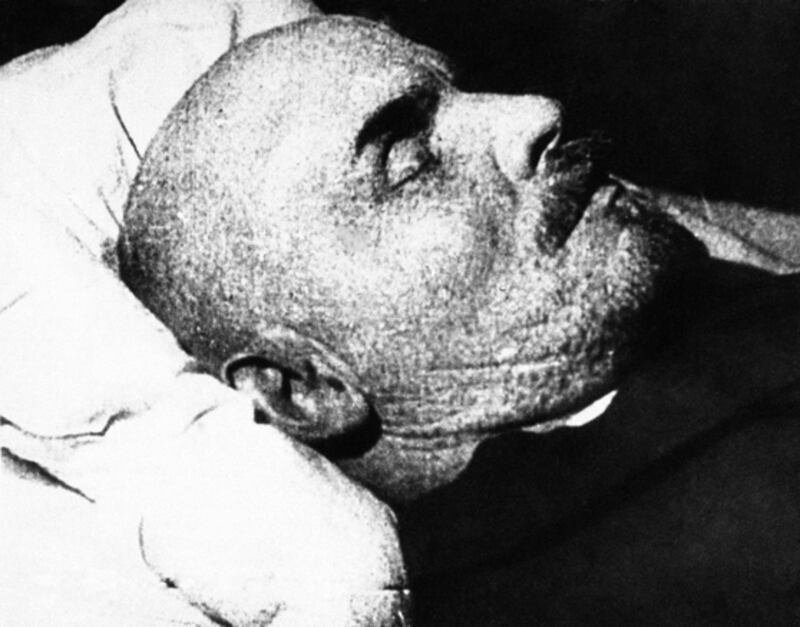
The founder of the Union of Soviet Socialist Republics died in 1924 after suffering from a prolonged illness, but you can still see his preserved body on display in a large tomb on the Red Square in Moscow. In the years leading up to his death, Lenin was banished to isolation and forbidden to discuss political issues with members of the USSR. The decision to embalm Lenin’s body was not agreed on until after his death. During the Soviet-era, tens of millions of Communists and tourists visited his shrine. But since the fall of the Soviet Union in 1991, a debate has raged over whether he should be removed from his tomb and buried properly next to his mother in St. Petersburg. T he United Russia party allegedly took an online poll earlier this year named “Goodbye Lenin” that revealed two-thirds of the population wanted Lenin removed from Red Square.
AP Photo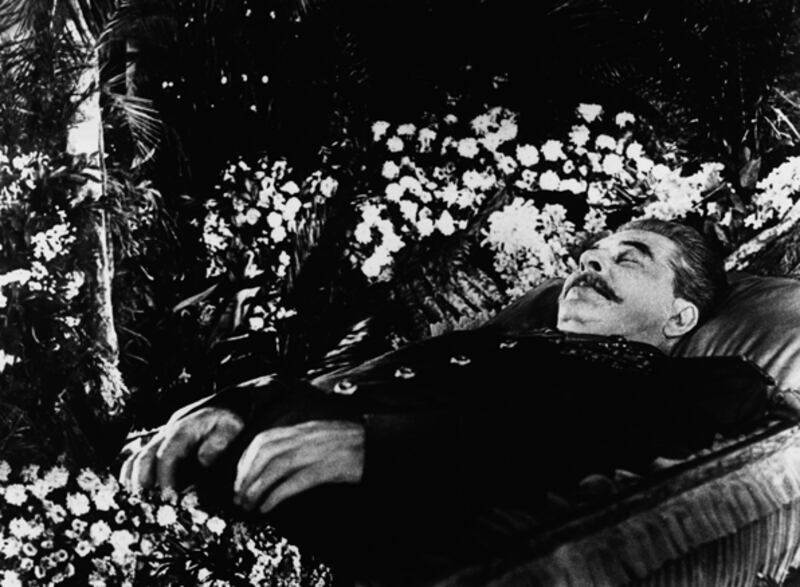
Joseph Stalin was Vladimir Lenin’s Soviet successor, becoming the general Secretary of the Communist Party of the Soviet Union’s Central committee in 1922. When the dictator died from poor health in 1953, his body was preserved and displayed next to Lenin’s. Three year’s after his death, Nikita Khruschev, first secretary of the Communist Party, gave a speech defiling the dictator’s reputation as the “ Father of the People,” and revealing many of the horrible crimes he committed during his leadership. While Lenin’s body still remains on display, Stalin was removed from the mausoleum eight years after he was enshrined.
Hulton, Deutsch Collection / Corbis